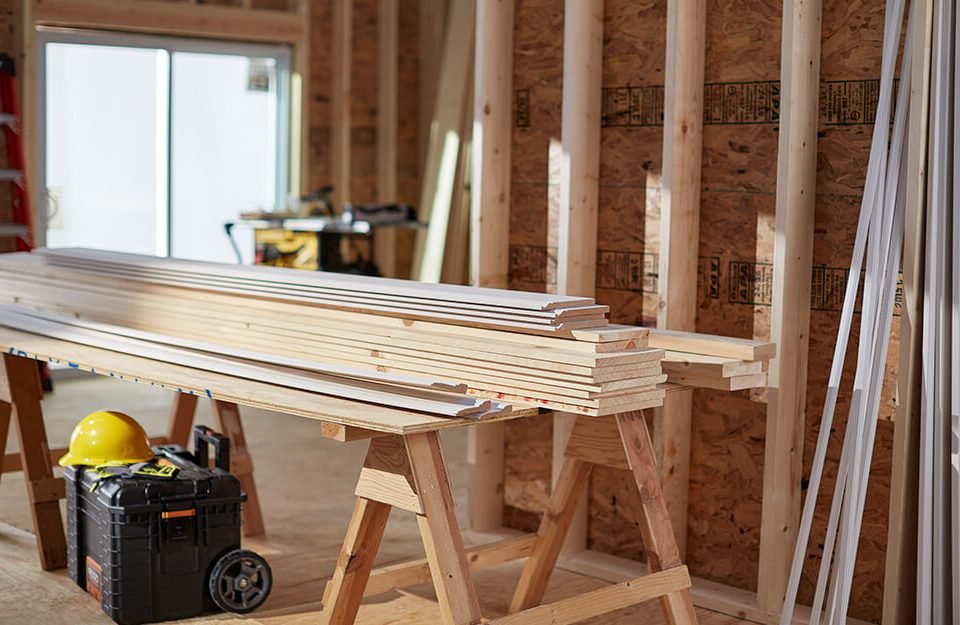All types of construction projects frequently use wood, but the materials aren’t chosen at random. In fact, each variety of wood has characteristics of its own that make it suited for various uses. There are a lot of floors available such as parquet flooring, laminate, and engineered wood floors and we recognize that it can be difficult to choose the best one. We have therefore developed the simplest, most understandable introduction to flooring on the internet to help you in your journey.
Table of Contents
Selection Of Flooring
Not sure which flooring option is best for you? Read our guides to learn the main distinctions between each kind of flooring.
Solid Wood Floors
Solid wood is carved from a single, gorgeous piece of wood. This results in a pure, straightforward, and real timber floor. They aren’t suited for every area due to their sensitivity to moisture and heat, but they can persist for generations due to their capacity to be sanded repeatedly.
Parquet Floors
Small solid or engineered wood pieces can be stacked in a variety of lovely patterns to create parquet flooring. For stately entrances, rural estates, and any other space where you want to make a statement, parquet is the material of choice. Design-conscious people favour it.
Laminate Floors
Although the picture you see on laminate flooring is a photograph, it closely resembles real wood or stone. As a result, they can be fashioned into a variety of visually attractive shapes, including planks and tiles. This flooring is incredibly adaptable because of their excellent level of splash and scratch resistance.
Engineered Wood Floors
Layers are used to create engineered wood flooring. A solid wood veneer covers the top layer, giving it a genuine appearance and feel. This flooring can be installed in almost any room because the other layers are made to withstand fluctuations in moisture and temperature.
Hardwood: What Is It?
Builders and interior designers utilize hardwood, a type of tree wood, for building homes, making house improvements, and other design or finishing work. Despite being more challenging to deal with than softwoods, hardwoods are desirable options for homeowners due to their variety of hues and grain patterns.
Varieties of Flooring
The most widely used hardwood species, as well as the different ways in which they can be used in building and woodworking tasks, are as follows:
- Alder: This birch tree’s wide-spaced wood grain pattern results in robust, light weight lumber. Alder wood is similar to cherry wood in many ways, yet it is more environmentally friendly and long-lasting. Alder wood is suitable for panelling, moulding, and furniture.
- Black walnut: To create pricey lumber with a rich, deep brown colour, manufacturers mill the robust, yet malleable heartwood of black walnut trees. This rare wood can be used to create pricey gunstocks, furniture, and veneer for medium-density fiberboard (MDF) panelling.
- Hickory: Hickory trees produce lumber with a distinctively light tint that gradually darkens to a pale, brown heartwood over time from their bright sapwood. Although hickory is a challenging timber to work with, considering its weight, it is incredibly sturdy and shock-resistant. Hickory is a resilient flooring option that gives your home a rustic interior design appeal.
- Brazilian cherry: Despite its name, the Brazilian cherry is not related to cherry trees. The Brazilian rainforests are home to the legume known as the Brazilian cherry or jatoba. The word “cherry” describes the wood’s organic red colour, which is reminiscent of the redwood or Western red cedar tree. Due to its flexibility and termite resistance, Brazilian cherry is a great flooring material.
- Oak: This kind of tree species makes lumber that may be divided into two primary groups: red oak and white oak. In contrast to white oak, which has a lighter look and brown, closely spaced grain patterns like those of Sapele or mahogany, the former has a red to reddish-brown colour. Although the strength of red and white oak species is equivalent, white oak is more water-resistant, making it a suitable choice for decking or kitchen flooring.
- Poplar: Poplar is a lighter-coloured hardwood that is softer and less dense than most other hardwoods. Poplar is a simple wood to deal with because of its smooth, medium feel, but it cannot retain a firm, lasting edge. Due to these qualities, poplar is a less popular choice when making furniture. Crates, pallets (such as for a pallet garden), and premium plywood can all be made out of poplar, though.
- Rosewood: Brazilian rosewood, also known as Dalbergia nigra, is a dark hardwood with a fragrant scent. Rosewood has a high oil content that gives it a natural sheen, similar to teakwood. Rosewood is available in a range of hues, from dark brown to purplish-red. Since true rosewood is an endangered species, the government severely restricts its trade. It is therefore extremely rare and in short supply.
- Southern yellow pine: This hardwood is dense and exceptionally strong, making it useful for a variety of projects. The durable structural components including roof trusses, staircases, and joinery can be constructed by construction workers using southern yellow pine. Additionally, you may employ the stark contrast between the wood’s field and grain to give wooden dining utensils, flooring, and decking a distinctive personality.










